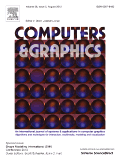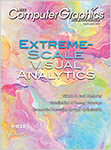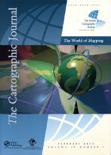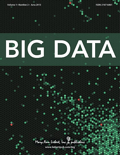
Information Visualization
Scope & Guideline
Exploring the art and science of data visualization.
Introduction
Aims and Scopes
- Data Visualization Techniques and Tools:
The journal emphasizes the development and comparison of various data visualization techniques and tools, exploring their effectiveness in conveying complex information. - Interactive Visual Analytics:
There is a strong focus on interactive visual analytics, which involves user engagement and manipulation of visual data to derive insights and support decision-making. - Cognitive and Perceptual Studies:
Research often investigates how cognitive processes affect the interpretation of visual data, aiming to optimize designs for better user comprehension. - Application Domains:
The journal covers a wide range of application domains, including healthcare, finance, social networks, and environmental science, showcasing how visualization can solve domain-specific challenges. - Multidimensional Data Representation:
A consistent focus is on techniques for visualizing multidimensional data, which is crucial for understanding complex datasets in various fields.
Trending and Emerging
- AI and Machine Learning Integration:
There is a growing trend towards integrating artificial intelligence and machine learning techniques into visualization processes, particularly for enhancing data interpretation and predictive modeling. - User-Centered Design:
A strong emphasis on user-centered design principles is emerging, with research focusing on how individual user characteristics and interactions can influence the effectiveness of visualizations. - Visual Analytics for Real-Time Data:
The trend of developing visual analytics tools for real-time data monitoring and analysis is on the rise, reflecting the need for immediate insights in various sectors such as finance and public health. - Ethics and Visualization:
An emerging theme involves the ethical implications of visualization practices, including the responsible use of data and the potential for bias in visual representations. - Exploratory Data Analysis:
There is an increasing interest in exploratory data analysis through visualization, where researchers aim to facilitate the discovery of patterns and insights from complex datasets.
Declining or Waning
- Static Visualization Methods:
There seems to be a waning interest in purely static visualization methods, as the field increasingly prioritizes interactive and dynamic approaches that enhance user engagement. - Traditional Graphical Formats:
Traditional graphical formats, such as basic bar and pie charts, are appearing less frequently, giving way to more innovative and complex visualization techniques that offer richer insights. - Generalized Visualization Frameworks:
Research focused on broad, generalized visualization frameworks without specific applications is declining, as the trend shifts towards more tailored solutions that address specific user needs or domain challenges.
Similar Journals

Computational Visual Media
Pioneering research in computational visual technologies.Computational Visual Media, published by TSINGHUA UNIVERSITY PRESS, is a premier open access journal dedicated to advancing the fields of Artificial Intelligence, Computer Graphics and Computer-Aided Design, and Computer Vision and Pattern Recognition. Since its inception in 2015, it has established a robust position within the academic community, consistently achieving Q1 rankings across its categories as of 2023. With exceptional Scopus rankings, including a remarkable percentile standing in the top 10% globally, the journal serves as a vital resource for researchers, professionals, and students eager to explore cutting-edge methodologies and technologies in computational visual media. The journal’s open access format enhances accessibility, fostering global collaboration and dissemination of knowledge, making it an indispensable platform for those at the forefront of innovation in these dynamic fields. The journal is headquartered in Beijing, China, and aims to publish high-quality research that not only contributes to theoretical advancements but also addresses practical challenges within computational visual technologies.

Revista Brasileira de Computacao Aplicada
Connecting Researchers, Professionals, and StudentsRevista Brasileira de Computação Aplicada is a distinguished peer-reviewed journal dedicated to disseminating innovative research and advancements in the field of applied computing. Published by UNIV PASSO FUNDO, this open-access journal has been serving the global academic community since 2009, ensuring that high-quality research is accessible to all. With its ISSN 2176-6649, the journal aims to foster collaboration and dialogue among researchers, professionals, and students, bridging the gap between theory and practice in computing. Positioned as an essential resource for those interested in the latest trends and developments in applied computational technologies, the journal strives to contribute significantly to the scholarly discourse and enhance knowledge sharing within this dynamic field. For researchers looking to publish their findings or professionals seeking to stay updated on cutting-edge research, the Revista Brasileira de Computação Aplicada serves as an invaluable platform that empowers the evolution of applied computing in Brazil and beyond.

Foundations and Trends in Databases
Exploring the Future of Data ManagementFoundations and Trends in Databases is a prestigious journal published by NOW PUBLISHERS INC, focusing on the dynamic field of database research. With an ISSN of 1931-7883 and an E-ISSN of 1931-7891, this journal has solidified its reputation as a leading publication in computer science, attaining a remarkable Q1 ranking in the Computer Science (miscellaneous) category for 2023. Spanning various converged years since its inception in 2007, the journal aims to provide comprehensive reviews and insights that drive forward the understanding of databases and their numerous applications. Although it operates under a subscription model, the journal’s release of high-impact, well-cited articles positions it as an essential resource for researchers, professionals, and students keen on exploring the latest advancements and challenges in database technologies. With a Scopus rank of #22/232 in General Computer Science, this journal not only showcases innovative research but also facilitates a deeper discourse in the thriving world of data management.

COMPUTERS & GRAPHICS-UK
Elevating the Standards of Computer-Aided DesignCOMPUTERS & GRAPHICS-UK is a premier journal dedicated to the fields of computer graphics, computer-aided design, and human-computer interaction. Published by Pergamon-Elsevier Science Ltd, this esteemed journal has been a critical resource for researchers and professionals since its inception in 1975. With an impressive impact factor and ranked in the second quartile for key disciplines such as Computer Vision and Pattern Recognition, and Engineering (Miscellaneous), it provides a platform for high-quality, peer-reviewed research spanning theoretical advancements, innovative technologies, and practical applications. Notable for its interdisciplinary approach, the journal also embraces contributions that bridge diverse areas within computer science. Although lacking Open Access options, readers can benefit from its rich archive and cross-disciplinary insights, making it essential for anyone looking to advance their knowledge and practice in computer graphics and related fields. The journal is located in the United Kingdom, at The Boulevard, Langford Lane, Kidlington, Oxford OX5 1GB, and continues to be a cornerstone for scholarly exchange and advancement in the digital visualization domain.

JOURNAL OF VISUALIZATION
Charting the future of visualization in academia and beyond.JOURNAL OF VISUALIZATION, published by Springer, is a pioneering platform dedicated to advancing the fields of condensed matter physics, electrical and electronic engineering, and computer graphics through innovative visualization techniques. With an ISSN of 1343-8875 and an E-ISSN of 1875-8975, this esteemed journal has been an essential resource since its inception in 1998, and continues to shape the landscape of visualization research, boasting a Q2 ranking in key academic categories as of 2023. The journal's commitment to high-quality research is reflected in its Scopus rankings, where it stands at #47 in Computer Graphics and Computer-Aided Design, #388 in Electrical Engineering, and #222 in Condensed Matter Physics. While the journal subscribes to a traditional access model, it remains a critical outlet for researchers and professionals seeking to disseminate their findings amidst evolving technological and scientific paradigms. Situated in Germany, the JOURNAL OF VISUALIZATION encompasses a diverse array of articles that not only highlight theoretical advances but also practical applications, making it a vital resource for anyone engaged in the confluence of visual analytics and technology.

JOURNAL OF FLOW VISUALIZATION AND IMAGE PROCESSING
Illuminating Fluid Dynamics Through Visual InnovationThe Journal of Flow Visualization and Image Processing, published by Begell House Inc, serves as a pivotal forum for scholars and practitioners in the fields of computer science applications, condensed matter physics, and mechanical engineering. Since its inception in 1996, this journal has been dedicated to advancing the understanding of fluid dynamics through visualization techniques and image processing methodologies. With a publication trajectory extending to 2024, the journal has established a solid reputation, reflected in its Q3 categorization across multiple disciplines as of 2023, indicating its relevance and contribution to current research paradigms. Although it is not an open-access journal, it offers invaluable insights and findings that are critical for researchers, professionals, and students alike who are interested in the complexities of flow phenomena and their applications. The journal's commitment to disseminating high-quality research—despite its current rankings, which show room for improvement—underscores its potential for growth and the vital role it plays in fostering innovation within the scientific community.

IEEE COMPUTER GRAPHICS AND APPLICATIONS
Empowering the Next Generation of Graphics InnovatorsIEEE Computer Graphics and Applications is a premier journal published by the IEEE Computer Society, focusing on the rapidly evolving fields of computer graphics and computer-aided design. With an established history since 1981, this journal has become a vital platform for disseminating innovative research and applications that bridge theory and practice. It is indexed in Scopus, holding a respectable rank of #49 in Computer Graphics and Computer-Aided Design and #250 in Software, reflecting its significant contribution to the academic community with a notable 54th and 38th percentile, respectively. While it currently operates without open access options, the journal continues to provide valuable insights that cater to researchers, professionals, and students alike, striving to push the boundaries of technology and creativity. With plans to converge until 2024, IEEE Computer Graphics and Applications remains committed to fostering advancements in the discipline, making it an essential resource for those at the forefront of computer graphics innovation.

CARTOGRAPHIC JOURNAL
Fostering Innovation in Spatial Data AnalysisThe Cartographic Journal, published by Taylor & Francis Ltd, stands at the forefront of the field of cartography and geographic information systems. Established in 1964, this quarterly journal has been a pivotal platform, fostering academic discourse and research in Earth-Surface Processes, evidenced by its impressive Q2 ranking and a Scopus status reflecting its relevance in the discipline. With an ISSN of 0008-7041 and an E-ISSN of 1743-2774, the journal circulates a wealth of insights and innovations essential for researchers, professionals, and students devoted to understanding the complexities of geographic representations. While it maintains a traditional subscription model, its integrity and contributions are well-recognized in the UK and globally, supported by a mission to enhance cartographic education and stimulate advancements in spatial data analysis. As it converges its focus through 2024, The Cartographic Journal continues to illuminate the evolving landscapes of geography and cartography, making it an indispensable resource for anyone invested in these dynamic fields.

International Journal of Applied Earth Observation and Geoinformation
Empowering Research through Earth Observation Excellence.International Journal of Applied Earth Observation and Geoinformation is a premier peer-reviewed journal published by Elsevier, focusing on the integration and application of earth observation and geoinformation technologies across diverse fields. With an open access model established in 2020, this journal enhances accessibility and dissemination of research crucial for addressing global challenges related to climate change, resource management, and sustainable development. The journal occupies a notable position within the academic community, featuring a Q1 ranking in multiple categories including Computers in Earth Sciences, Earth-Surface Processes, and Global and Planetary Change, reflecting its significant impact and relevance in these disciplines. It is recognized for its high-quality articles that explore innovative methodologies and applications, making it an essential resource for researchers, practitioners, and students alike who seek to advance their understanding of earth dynamics and geospatial technology. The journal is indexed in Scopus with impressive rankings that underscore its high citation impact and scholarly influence, with an emphasis on providing a platform for the latest findings in management, monitoring, and policy in environmental science.

Big Data
Transforming data into insights.Big Data, an esteemed journal published by MARY ANN LIEBERT, INC, serves as a leading platform within the realms of computer science and information systems. Launched in 2013, this journal has made significant strides in shaping the discourse around the management, analysis, and applications of large-scale data. With a commendable impact factor reflected in its 2023 quartile rankings—Q1 in Information Systems and Management, and Q2 in both Computer Science Applications and Information Systems—Big Data is recognized for its quality and influence, holding a notable position in Scopus rankings. Renowned for its rigorous peer-review process, the journal welcomes original research, reviews, and discussions that address the challenges and innovations associated with big data technologies. Researchers, professionals, and students alike will find Big Data an indispensable resource that not only highlights emerging trends but also fosters collaboration and knowledge sharing within the data science community. Access options are available through institutional subscriptions and individual access, ensuring a broad dissemination of critical research findings.